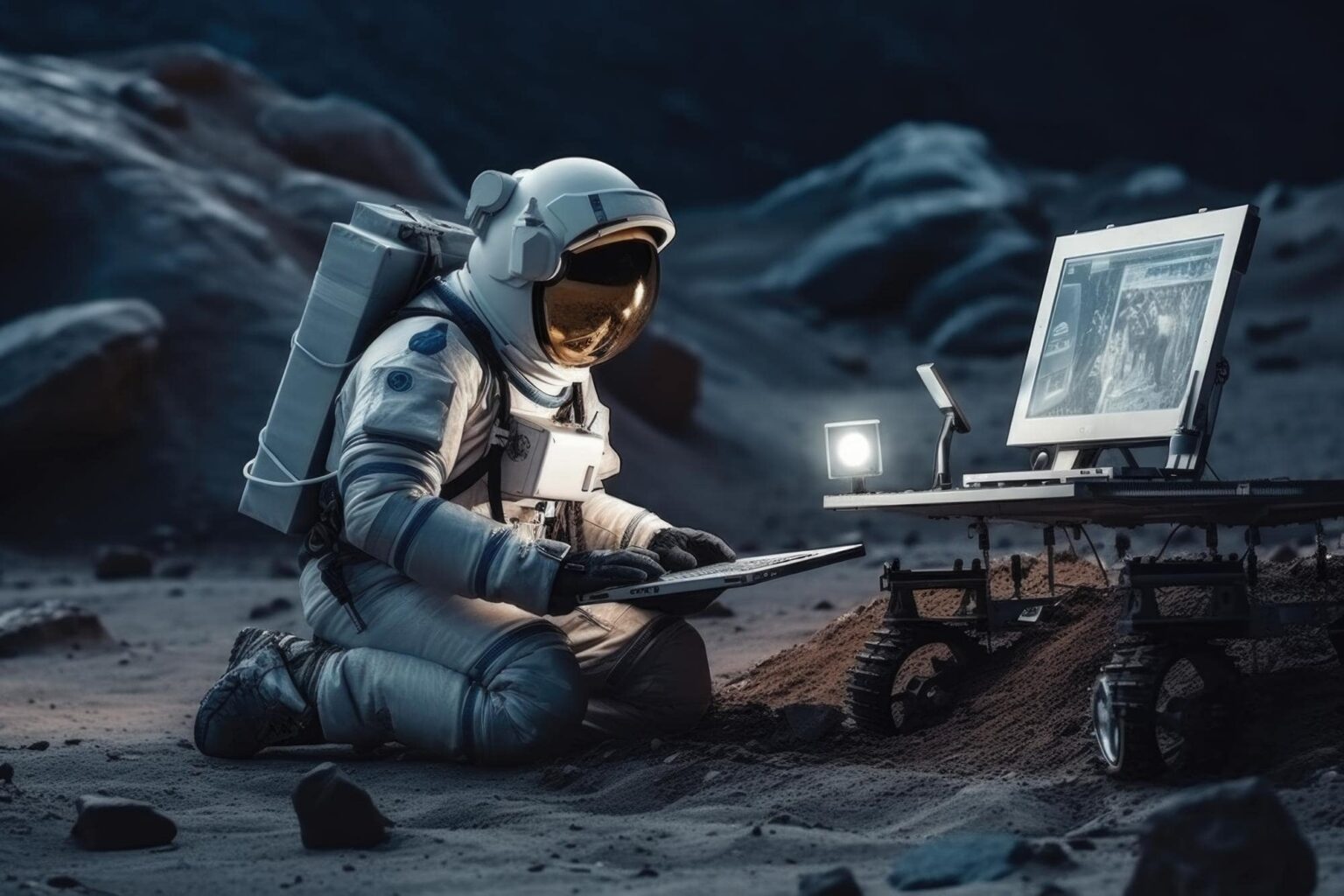Space Intelligence: How AI is Revolutionizing Space Exploration, Satellite Communications, and Astronaut Assistance” explores the innovative ways artificial intelligence (AI) is transforming various aspects of space exploration, satellite communications, and astronaut support. Here’s an overview of the key themes covered in this exploration:
Space Exploration:
- Autonomous Navigation: Integration of AI algorithms into spacecraft navigation systems to enable autonomous maneuvering, trajectory planning, and collision avoidance during space missions, reducing reliance on ground control and enabling more agile and responsive spacecraft operations.
- Planetary Exploration: Utilization of AI-driven robotic rovers, landers, and orbiters for planetary exploration missions, enabling autonomous decision-making, terrain mapping, and scientific discovery on celestial bodies such as Mars, the Moon, and beyond.
- Exoplanet Discovery: Application of AI techniques, such as machine learning and data mining, to analyze astronomical data collected by space telescopes and observatories for exoplanet detection, classification, and characterization, accelerating the search for habitable worlds and extraterrestrial life.
Satellite Communications:
- Signal Processing: Employing AI-powered signal processing algorithms to enhance satellite communication systems’ efficiency, reliability, and throughput by optimizing signal modulation, error correction, and bandwidth allocation in dynamic and congested communication environments.
- Satellite Constellations: Leveraging AI-driven constellation management techniques to optimize the deployment, operation, and reconfiguration of satellite constellations for global coverage, broadband internet access, and Earth observation applications, maximizing network performance and capacity.
- Interference Mitigation: Using AI-based interference detection and mitigation methods to identify and mitigate sources of signal interference, jamming, and spectrum congestion in satellite communication networks, ensuring reliable and secure data transmission.
Astronaut Assistance:
- Health Monitoring: Implementing AI-powered health monitoring systems to track astronauts’ physiological parameters, vital signs, and well-being during space missions, enabling early detection of health issues, personalized medical interventions, and remote medical support from mission control.
- Cognitive Support: Developing AI-driven cognitive assistance tools and virtual assistants to provide astronauts with real-time information, task reminders, and decision support for mission planning, experiments, and emergency procedures, enhancing crew efficiency and situational awareness in space.
- Robotic Assistance: Deploying AI-driven robotic assistants, such as humanoid robots and robotic arms, aboard spacecraft and space stations to assist astronauts with maintenance tasks, equipment handling, and scientific experiments, augmenting crew capabilities and productivity in microgravity environments.
Space Data Analysis:
- Earth Observation: Analyzing satellite imagery and remote sensing data using AI techniques, including computer vision and deep learning, to monitor environmental changes, natural disasters, and climate trends on Earth, facilitating disaster response, resource management, and environmental conservation efforts.
- Space Weather Prediction: Utilizing AI algorithms to analyze space weather data, solar activity patterns, and geomagnetic disturbances for predicting and mitigating their impact on satellite operations, spacecraft electronics, and terrestrial infrastructure, safeguarding critical assets in space and on Earth.
- Astrophysical Research: Applying AI-driven data analysis methods to process, interpret, and model astronomical observations, gravitational wave signals, and cosmic phenomena, advancing our understanding of the universe, dark matter, and cosmic evolution through computational astrophysics.
Collaborative Missions and Partnerships:
- International Cooperation: Fostering international collaborations and partnerships among space agencies, research institutions, and commercial entities to leverage AI technologies, share resources, and pool expertise for joint space exploration missions, satellite projects, and technology development initiatives.
- Industry Engagement: Engaging private-sector companies and startups in the development and deployment of AI-driven space technologies, satellite services, and commercial space applications, stimulating innovation, competition, and investment in the space industry ecosystem.
- STEM Education and Outreach: Promoting STEM education, outreach programs, and citizen science initiatives that engage students, educators, and the general public in space exploration, AI research, and hands-on projects to inspire the next generation of scientists, engineers, and space enthusiasts.
Conclusion:
“Space Intelligence: How AI is Revolutionizing Space Exploration, Satellite Communications, and Astronaut Assistance” highlights the transformative impact of AI on space exploration, satellite communications, and astronaut support, opening new frontiers of discovery, collaboration, and innovation in the space domain. By harnessing AI technologies to augment human capabilities, automate routine tasks, and analyze vast amounts of space data, stakeholders can unlock new opportunities for scientific discovery, space commerce, and human exploration beyond Earth’s orbit, paving the way for a sustainable and inclusive future in space.



